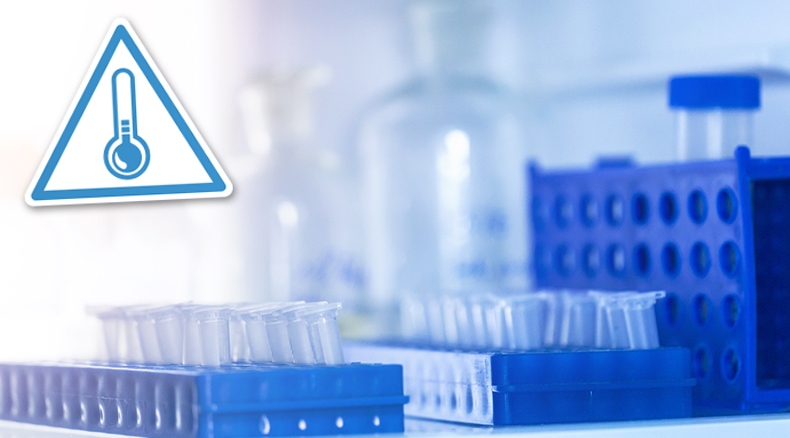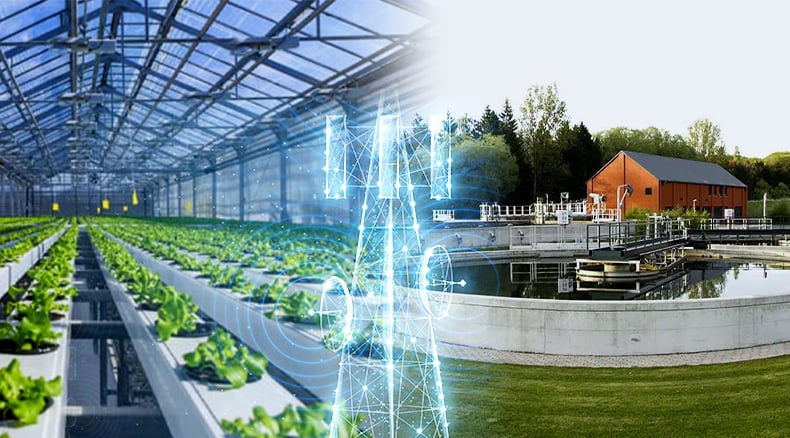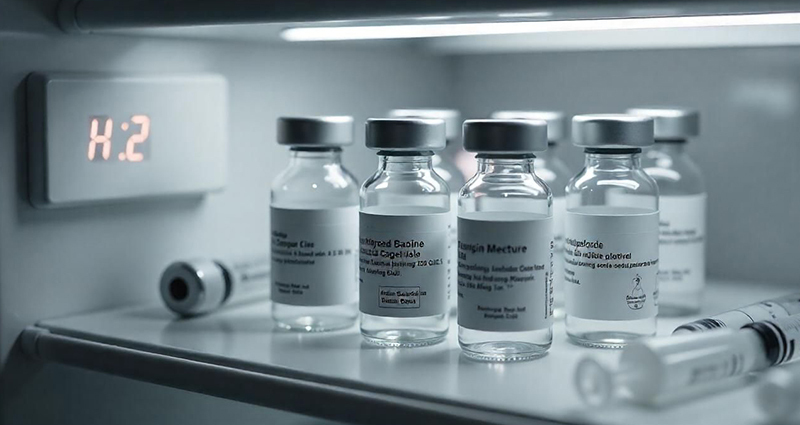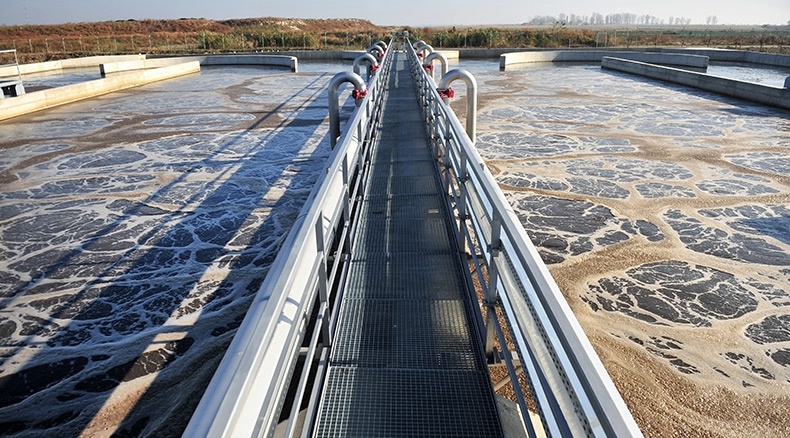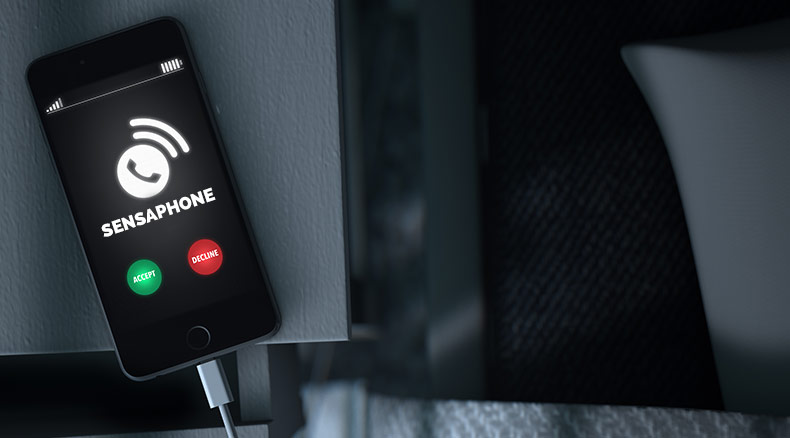
Would you benefit from an alarm auto dialer? Many businesses cannot have personnel on-premise 24 hours a day, making it challenging to keep track of the facility at all times. An alarm auto dialer provides a cost-effective solution to get automatic alerts if conditions change at your plant or office. You get peace of mind knowing you will be alerted around the clock if there are any change that could impact business operations or even lead to a disaster.
As the saying goes, "Where there's smoke, there's fire." If your facility is operating under undesirable conditions, you need to know, especially during non-work hours. Heat loss in the winter, lack of air conditioning in the summer, water leaks pooling on the floor and equipment, excessive humidity, or unauthorized opening of doors or windows can mean big trouble. An alarm auto dialer sends notifications of potential problems so that you can address them before they result in costly repairs and downtime.
What is an alarm auto dialer?
It's a fully programmable system that is simple to install and operate. Popularly known as a remote monitoring system, the alarm auto dialer pulls data (like temperature, humidity levels, etc.) from the sensors placed at key locations in your office or facility. Each condition that you want to monitor requires its own sensor input on the dialer.
For example, sensors are available for detecting:
- Temperature changes at the device site or other areas indoors, outdoors, basement, refrigerator, and freezer areas
- Water on the floor
- Humidity fluctuations
- Smoke
- Electricity power status at the device site and other property areas
- Intrusion
Benefits of an alarm auto dialer
An alarm auto dialer offers an easy and inexpensive way to monitor a remote or unattended facility on a 24/7 basis. It provides immediate feedback on several conditions that could require their attention. Using an alarm auto dialer, you can:
- Save time alerting key personnel: Auto dialers automatically contact emergency response teams to make them immediately aware of a situation.
- Take prompt action: Alarm dialers ensure prompt action is taken in emergency or critical scenarios.
- Log and store data: Alarm auto dialers can log and store information on any issues or abnormalities. Some can even store data in the cloud for easy accessibility and useability by multiple users online while protecting information in a secure area.
Choosing an alarm auto dialer
When selecting an alarm auto dialer, consider the following factors:
- The number and type of sensors the unit can accept. Does it have enough sensor inputs to monitor all necessary conditions? Can the device connect to a variety of sensors to monitor conditions? Are you required to buy a specific brand of sensors or can it accept third-party sensors? Also, consider how easy it is to calibrate and enable sensors in different facility zones.
- The communication connection. Do you prefer a telephone or web-based interface? Both send alarm notifications when conditions fall out of preset ranges. However, you must call a telephone-based device to retrieve a sensor’s status report or go onsite while a cloud-based system allows you to retrieve information online using any Internet-connected device. You can save space by offloading files to the cloud and share files with multiple people at the same time.
- Security. Cloud-based systems offer an added level of data security and backup in case of hardware failures or business disruption due to a catastrophic event. Cloud storage of important information supports business continuity and disaster recovery to quickly resume business operations.
- Number of people who can receive alarm notifications. If you have a larger facility, you may want a system that can send alerts to a larger number of people.
- Other features to consider include:
- Ability to set off a local alarm
- Access to remotely control the thermostat to adjust site temperature
- Memory that retains system settings in the event of power loss
- Battery backup
Types of Alarm Auto Dialers
Sensaphone Sentinel Monitoring System: Ethernet Communications
The cloud-based Sentinel and Sentinal Pro remote monitoring systems function as data loggers and alarm auto dialers, tracking the critical conditions of remote facilities and environments and providing unlimited alarm notifications directly to a mobile device. They can monitor up to twelve external sensors for temperature, humidity and more, with readings stored in the cloud and accessible from anywhere using a web-based interface and mobile application.
Enhanced data logging capabilities enable users to print, graph or export accurate historical records. The system also can create event reports and delivers them daily via e-mail. In addition, it can generate an audit trail of all user data activities, edits or deletions.
While the Sentinel is Ethernet-based, it is available with a cellular option for locations that do not have Internet access. As such, you can receive alarm notifications through an Internet or cellular connection.
Sensaphone Stratus EMS: Data Center Monitoring
Sensaphone’s cloud-based Stratus EMS allows you to monitor data center facilities and environments with the same degree of certainty you’ve come to expect from Sensaphone. Users can check critical conditions of their climate and equipment-sensitive commodities at any time. The Stratus EMS monitors, delivers alarms, and data logs 64 input/output points from Modbus inputs in addition to 12 universal digital or analog inputs.
Sensaphone 1400 and 1800: Phone Line Communications
The Sensaphone 1400 and 1800 systems monitor up to four or eight sensor inputs, respectively. They allow you to record custom alerts and receive alarm messages in your voice (instead of hearing an automated voice) over a standard telephone line. The systems can immediately alert up to eight people when a sensor indicates a potential problem. Each has a relay output for automatic or manual control of external devices. The internal rechargeable battery backup provides 24 hours of continuous monitoring and alerts in the event of a power outage. The 1400 and 1800 have a temperature sensing range of -109 °F to 168 °F | -85 °C to 76 °C.
Sensaphone 400 and 800: Phone Line Communications
Ideal for small business owners, the Sensaphone 400 and 800 systems provide four or eight sensor inputs and call-out numbers, respectively. Users can easily calibrate, enable, or disable each zone individually with an automatic input configuration. The built-in output relay can switch external devices on or off automatically or manually to trip local lights or alarms. It also allows you to control a thermostat to adjust site temperature between two set points. In the event of a power outage, the internal battery backup provides 24 hours of continuous monitoring and alerts. The 400 and 800 can sense temperatures ranging from -20 °F to 150 °F | -30 °C to 65 °C.
WSG 30 Wireless, Web-based Monitoring Systems: Ethernet Communications
This alarm and monitoring dialer offers the convenience of operating with wireless sensors when hard-wiring sensors is not an option. The system monitors equipment and environmental conditions using thirty wireless sensors that transmit a signal up to 300 feet wirelessly.
WSG30 sends alarm notifications. to up to 32 appropriate personnel by e-mail and text message. If used in a data center, environmental alarm notifications can be sent directly to Network Management software. The system also sends a diagnostic alarm if there are problems with the sensors.
Up to 64,000 time-stamped records can be stored inside the WSG-30 to follow the history and trends of the monitored conditions. Alarm and data log history is easily accessed through the WSG-30 web page. As the WSG-30 supports Modbus protocol, users can use third-party automation software to connect and pull data for sensor values.
If you have questions about which alarm auto dialer is right for your application, our support team is on hand to make a recommendation.

